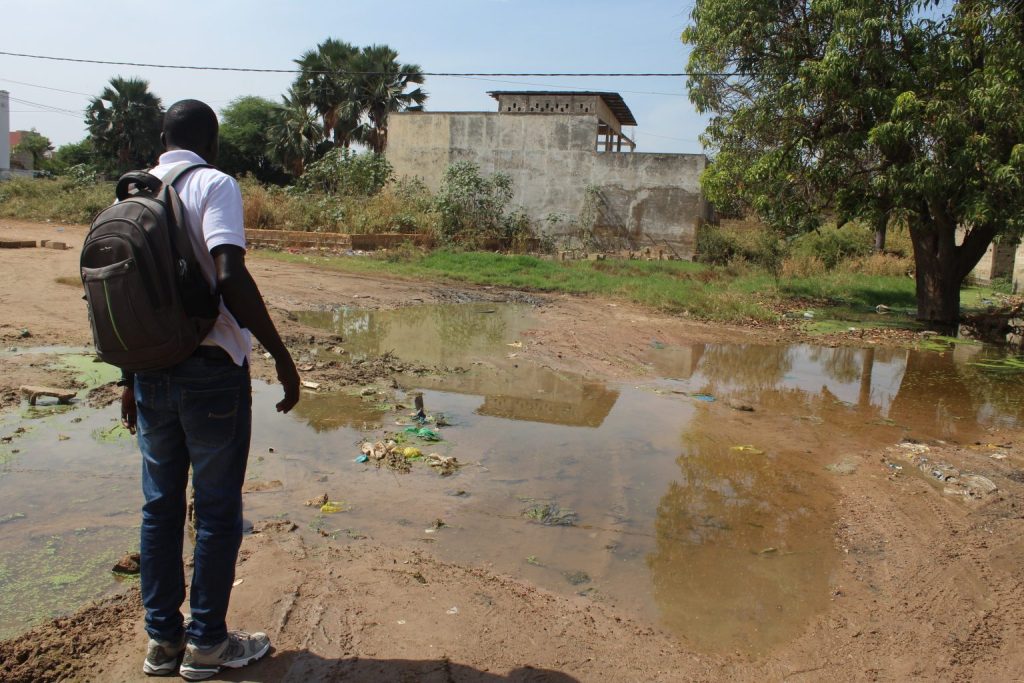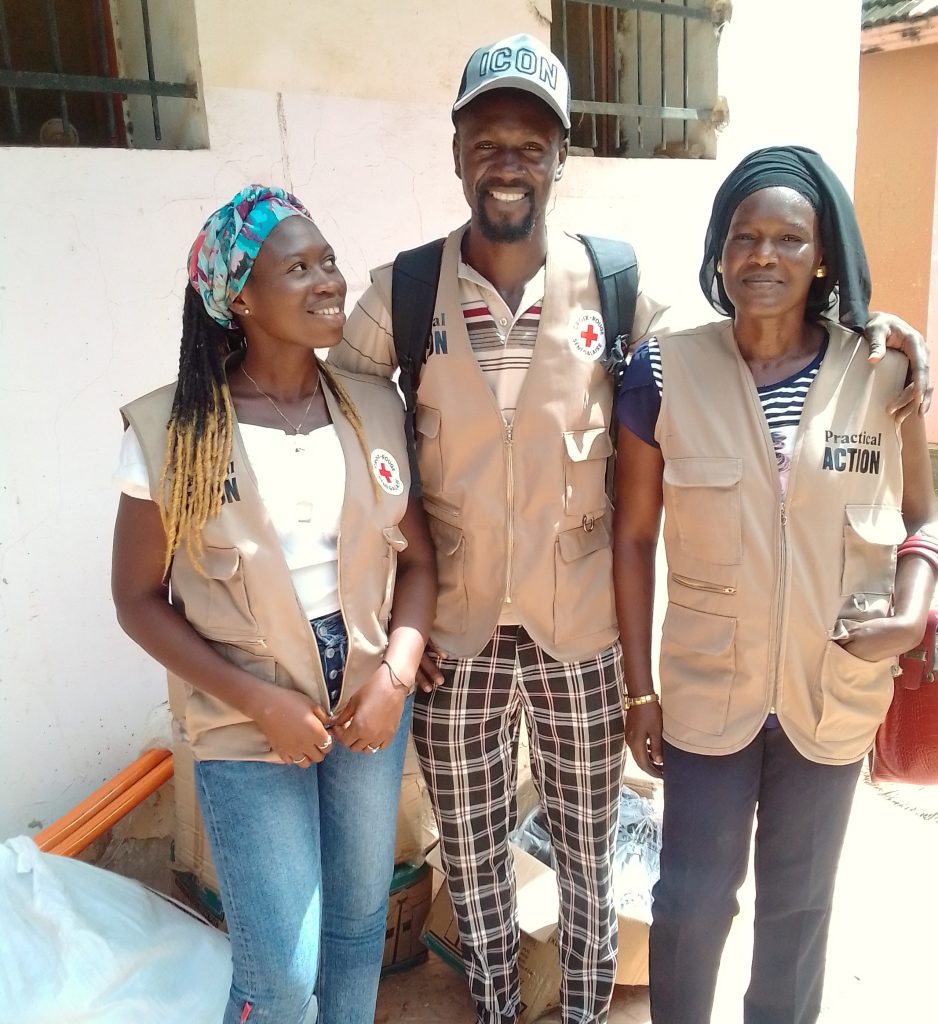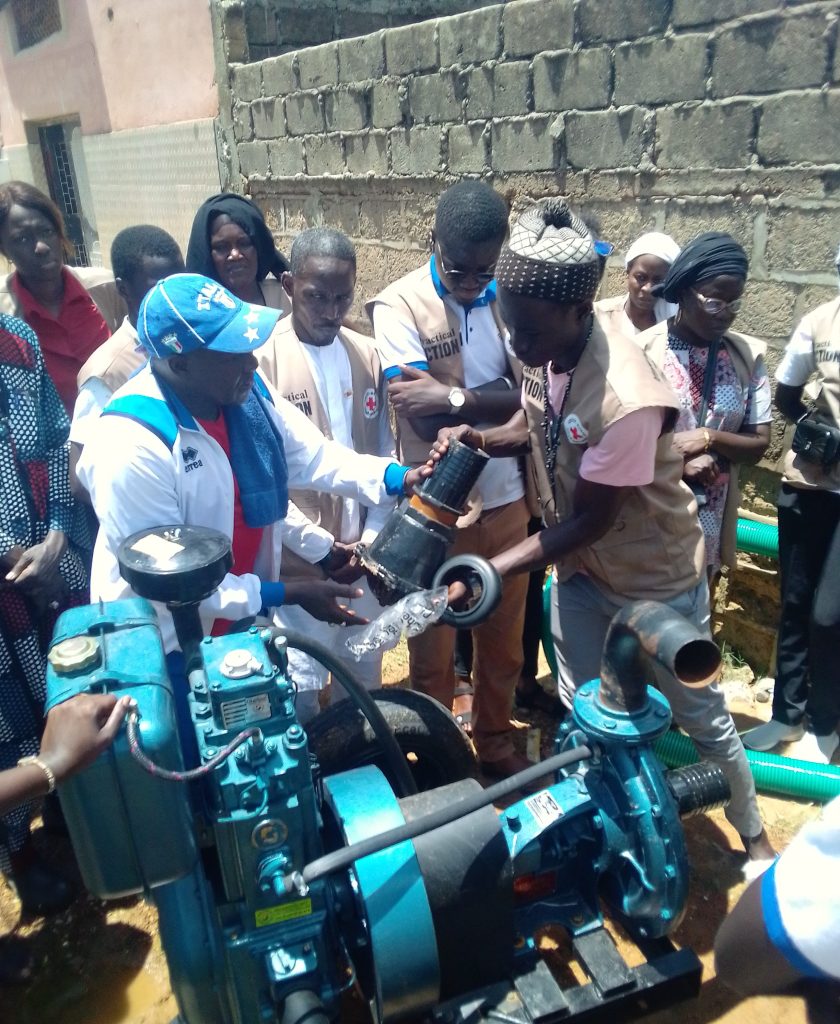As part of the Zurich Flood Resilience Alliance, the Promoting Community Resilience to Flooding in the Commune of North Thies (PRECIT) project was set up in Senegal to strengthen social, political and financial efforts to build community resilience to flooding through public, private and civil society partnerships.
Thiès Nord, one of Senegal’s largest regions in terms of demographic and economic weight, has long been affected by floods. Risk factors are multiple: increased intense rainfall over a short period of time; topography that is prone to flooding; poor urbanization and the degradation of vegetation cover upstream, to name a few.
Floods exacerbating environmental and health issues
As with many regions of Senegal, flooding is a crucial issue that poses significant environmental and public health problems. Water stagnation, inadequate sanitation facilities, mosquito infestation, flies and other vectors in flooded areas put concerned populations, particularly children, at risk of diarrheal diseases and malaria.
One of the main problems at the origin of floods is the blockage of places reserved for the routing of household waste water. The resultant flooding damages materials and has negative impacts on the environment, economy and image of the country. As existing public services are limited, the involvement of local private actors, civil society and communities is essential for the efficient and sustainable management of floods.

Lives turned upside down each rainy season
Aliou Diop, a 38-year-old farmer, was born and raised in Thiès Nord. The Thialy district in which he lives suffers from severe flooding, mainly due to inadequate construction and people’s lack of means. During the rainy season, water enters homes and stagnates there, which leads to health and sanitation problems. Some families lose their houses, their income and their resources. As an active member of his community, Aliou and his neighbours mitigate this by quickly removing the water using a pump. They borrow equipment from the mayor’s office, but it is often unavailable due to being allocated elsewhere.
Ndeye Awa Beye, a 38-year-old mother of three, lives in Keur Mame El Hadj, another neighbourhood affected by floods in Thiès Nord. Living near the canal causes water to flow into her house during the rainy season which causes huge damages and forces her and her family to abandon their home. Because of the floods, Ndeye Awa lost her refrigerator and her provisions, particularly the rice. The floods have also affected her ability to go to work, as she instead must prioritize finding shelter for her family.
Strengthening efforts to increase community flood resilience
It is in these heavily flood-affected areas that the Promoting Community Resilience to Flooding in the Commune of North Thies (PRECIT) project, funded by the Z Zurich Foundation, has been operating since 2021. Implemented by Practical Action as part of the Zurich Flood Resilience Alliance, the main objective of the PRECIT project is to strengthen social, political, and financial efforts in building community resilience to flooding through public, private, and civil society partnerships.
One of the prerequisites of the project is the measurement and monitoring of indicators of community resilience to flooding in Thiès Nord through the Flood Resilience Measurement for Communities (FRMC) tool developed by the Zurich Flood Resilience Alliance. This tool allows for a better understanding of flood risk based on community knowledge.

To strengthen flood resilience across communities in Thiès Nord, the project has provided all four intervention zones with motor pumps and resilience kits to enable them to react quickly to flooding.
The project has shown us its commitment towards our community by providing us with materials such as shovels, rakes, wheelbarrows, and gloves. What impressed us the most were the pumps because that’s what we needed the most. Before, we used to go to the town halls to borrow them, and we were rarely lucky enough to find them because the other neighbourhoods needed them too. Now we have our own pump.
Aliou Diop, a local farmer, reflecting on the efforts made by the project and the prospects that are opening.

Towards a resilient future
With the project’s implementation, the communities were able to learn about the basics of resilience and the priorities for building resilience, and how to protect themselves and their livelihoods at the same time. “The trainings we received from the project allowed us to learn about priority solutions to improve our lives in terms of prevention,” says Ndeye Awa, a member of Early Warning System (EWS) office. As a result, an EWS was set up to actively involve communities at risk, facilitate training and awareness, effectively disseminate messages and warnings, and ensure that the community is well-prepared for future disasters. Ndeye Awa is now a member of the SAP office in her neighbourhood and plays an important role in its functioning.
Many young people have been able to benefit from the training. The equipment distributed is available to the entire community, which uses it not only for flooding but also for cleaning and sanitizing the neighbourhood. Beyond building resilience to flooding, it is the positive impact of the project on the lives of individuals that is most significant for the community.
To find out more about the work of the Alliance in Senegal, visit our country page.

Comments